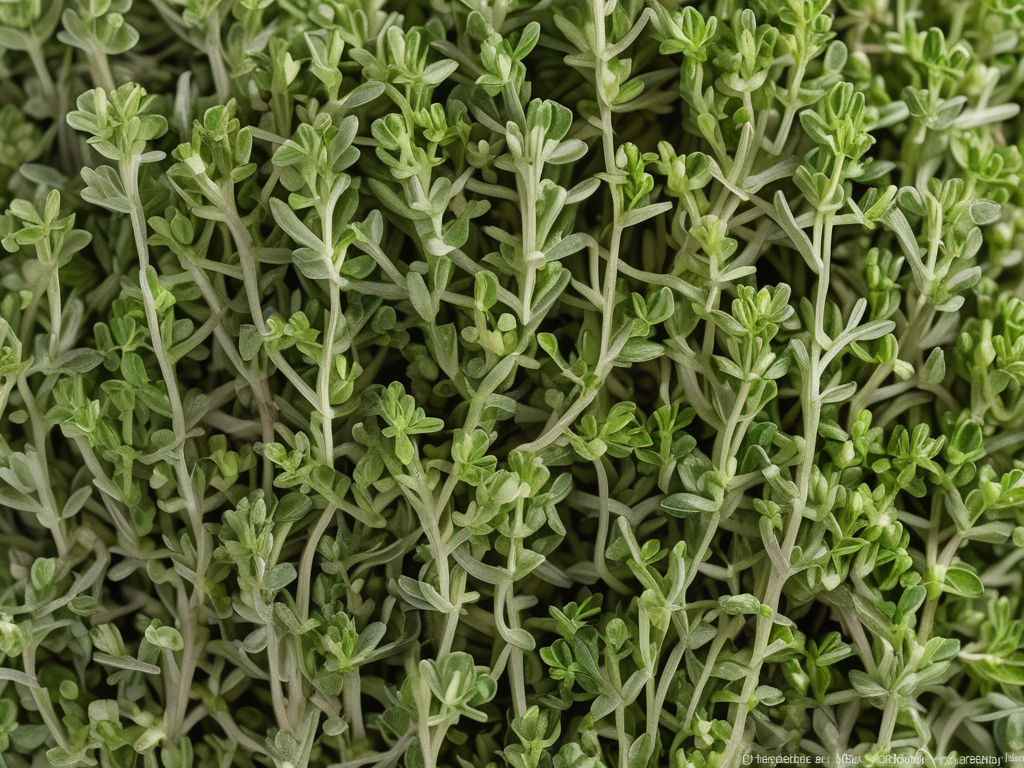
Comprehensive Guide to Common Thyme Storage Tips to Avoid Wastage
Get Your Free Food Safety Cheat Sheet
30 most common foods with instant answers. Print it and stick it on your fridge—completely free!
Comprehensive Guide to Common Thyme Storage Tips to Avoid Wastage
Common thyme is a versatile herb that adds a delightful flavor to a wide variety of dishes, from soups and stews to meats and vegetables. To ensure you always have fresh thyme on hand and avoid wastage, proper storage is key. In this guide, we will explore some practical tips for storing common thyme to maintain its flavor and freshness for as long as possible. (Common thyme)
Understanding Common Thyme
Before diving into storage tips, let's briefly discuss common thyme and its characteristics. Common thyme, also known as Thymus vulgaris, is a popular herb in Mediterranean cuisine known for its aromatic leaves and earthy flavor. It is commonly used in both fresh and dried forms to enhance the taste of various dishes.
Characteristics of Common Thyme:
- Small, narrow leaves
- Woody stems
- Strong, aromatic scent
- Earthy and slightly minty flavor
Now that we have an understanding of common thyme, let's explore the best practices for storing this herb to prevent wastage.
Proper Storage Tips for Common Thyme
1. Fresh Thyme:
When storing fresh common thyme, follow these tips to maintain its freshness and flavor:
- Refrigeration: Place fresh thyme in a plastic bag or wrap it in a damp paper towel before storing it in the refrigerator. This will help retain moisture and prevent wilting.
- Temperature: Store fresh thyme in the refrigerator's crisper drawer, where the temperature is slightly cooler and more consistent.
- Trimming: Trim the ends of the stems before storing to encourage water uptake and extend the herb's lifespan.
2. Dried Thyme:
If you have dried common thyme, here's how you can store it properly:
- Airtight Container: Transfer dried thyme to an airtight container or a resealable bag to protect it from moisture and air exposure.
- Cool, Dark Place: Store the dried thyme in a cool, dark place away from direct sunlight to preserve its flavor and aroma.
- Labeling: Don't forget to label the container with the date of storage to track its freshness.
3. Freezing Thyme:
Freezing common thyme is a great way to preserve it for an extended period. Here's how to freeze thyme effectively:
- Blanching: Blanch fresh thyme in boiling water for a few seconds, then transfer it to an ice water bath to stop the cooking process.
- Drying: Pat the blanched thyme dry with a paper towel before freezing it in airtight containers or freezer bags.
- Usage: Frozen thyme is best used in cooked dishes like soups and stews, as freezing can alter its texture.
4. Herb Preserving Techniques:
Consider using alternative methods to preserve common thyme for long-term storage:
- Herb-infused Oils: Make herb-infused oils with fresh thyme by combining it with olive oil and storing the mixture in a sealed container.
- Herb Butter: Create herb butter by mixing chopped thyme with softened butter and freezing it in portions for later use in cooking.
Safety Precautions for Storing Common Thyme
When storing common thyme, it's essential to follow safety guidelines to prevent contamination and ensure food safety:
- Washing: Always wash fresh thyme before storing it to remove any dirt or debris.
- Cross-Contamination: Store thyme away from raw meats and other perishable foods to avoid cross-contamination.
- Expiration Date: Keep track of the expiration date of dried thyme and discard any old or expired herbs to maintain freshness and flavor.
Conclusion
By following these storage tips and safety precautions, you can extend the shelf life of common thyme and reduce wastage. Whether you prefer using fresh thyme in your dishes or opt for dried or frozen varieties, proper storage techniques are essential for preserving the herb's flavor and aroma. Experiment with different storage methods to find the one that works best for your cooking needs and enjoy the delightful taste of common thyme in your culinary creations.
Remember, fresh herbs like common thyme can elevate the flavor of your dishes, so store them correctly to make the most of their culinary potential. Happy cooking!
For more information on common thyme and its culinary uses, check out our guide on common thyme. (Common thyme)
Related Posts
Here are some other articles you might find helpful:
Authoritative Food Safety References
These agencies and university labs inform every tip and health precaution we publish.
USDA FoodKeeper – Cold Storage Guidelines
Official refrigerator, freezer, and pantry timelines maintained by the U.S. Department of Agriculture.
Visit USDA FoodKeeperFDA Produce Safety Rule & Grower Guidance
Field-to-fridge handling practices that prevent contamination of fruits, vegetables, and leafy greens.
Visit FDA Produce SafetyCDC Foodborne Illness Prevention Hub
Surveillance-backed guidance on pathogens, symptoms, and steps to reduce foodborne illness risk.
Visit CDC Food SafetyUC Davis Postharvest Technology Center
University research detailing optimal storage atmospheres for produce after harvest.
Visit UC Davis PostharvestPenn State Extension – Home Food Preservation & Safety
Peer-reviewed extension bulletins on safe canning, chilling, and reheating practices.
Visit Penn State ExtensionGet Your Free Food Safety Cheat Sheet
30 most common foods with instant answers. Print it and stick it on your fridge—completely free! Want more? Upgrade to the complete guide with 70+ foods.
Scan your food directly and get instant safety info using our AI-powered camera feature.